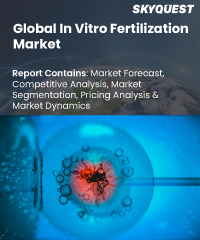
Report ID: SQMIG35H2163

Report ID:
SQMIG35H2163 |
Region:
Global |
Published Date: August, 2024
Pages:
219
|
Tables:
65 |
Figures:
75
June of 2023 The debut of MilliporeSigma's new CellToxTM Assay Platform was announced. The platform consists of a collection of in vitro tests intended to evaluate the safety of substances and medications.
WuXi AppTec announced in May 2023 that its in vitro toxicological capabilities have expanded. New assays will be included as part of the expansion, and a new service for creating personalized in vitro assays will be introduced.
Thermo Fisher Scientific Inc. said in April 2023 that it had acquired CooperSurgical, an IVF supplier of goods and services. Thermo Fisher will be able to increase its market share in the IVF sector thanks to the acquisition.
Vitrolife declared in March 2023 that the FDA has approved its Cryotop vitrification device. A novel method for vitrifying embryos—a quick freezing procedure used to maintain their viability—is the Cryotop system.
Our industry expert will work with you to provide you with customized data in a short amount of time.
REQUEST FREE CUSTOMIZATIONWant to customize this report? This report can be personalized according to your needs. Our analysts and industry experts will work directly with you to understand your requirements and provide you with customized data in a short amount of time. We offer $1000 worth of FREE customization at the time of purchase.

Report ID: SQMIG35H2163